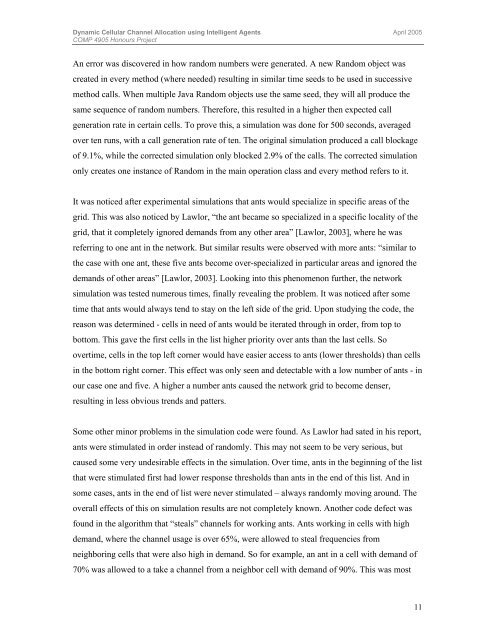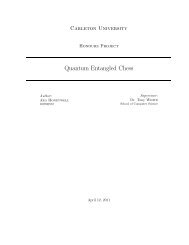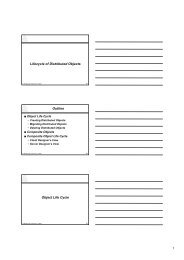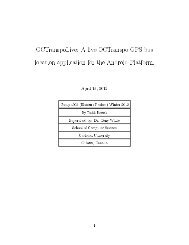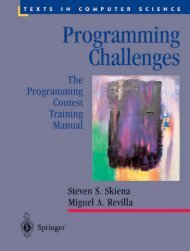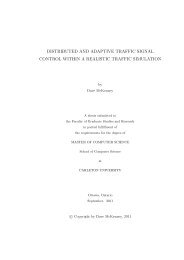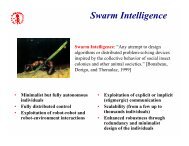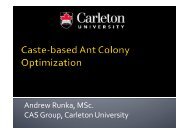Gayan Abeysundara - Complex Adaptive Systems Group
Gayan Abeysundara - Complex Adaptive Systems Group
Gayan Abeysundara - Complex Adaptive Systems Group
You also want an ePaper? Increase the reach of your titles
YUMPU automatically turns print PDFs into web optimized ePapers that Google loves.
Dynamic Cellular Channel Allocation using Intelligent Agents April 2005COMP 4905 Honours ProjectAn error was discovered in how random numbers were generated. A new Random object wascreated in every method (where needed) resulting in similar time seeds to be used in successivemethod calls. When multiple Java Random objects use the same seed, they will all produce thesame sequence of random numbers. Therefore, this resulted in a higher then expected callgeneration rate in certain cells. To prove this, a simulation was done for 500 seconds, averagedover ten runs, with a call generation rate of ten. The original simulation produced a call blockageof 9.1%, while the corrected simulation only blocked 2.9% of the calls. The corrected simulationonly creates one instance of Random in the main operation class and every method refers to it.It was noticed after experimental simulations that ants would specialize in specific areas of thegrid. This was also noticed by Lawlor, “the ant became so specialized in a specific locality of thegrid, that it completely ignored demands from any other area” [Lawlor, 2003], where he wasreferring to one ant in the network. But similar results were observed with more ants: “similar tothe case with one ant, these five ants become over-specialized in particular areas and ignored thedemands of other areas” [Lawlor, 2003]. Looking into this phenomenon further, the networksimulation was tested numerous times, finally revealing the problem. It was noticed after sometime that ants would always tend to stay on the left side of the grid. Upon studying the code, thereason was determined - cells in need of ants would be iterated through in order, from top tobottom. This gave the first cells in the list higher priority over ants than the last cells. Soovertime, cells in the top left corner would have easier access to ants (lower thresholds) than cellsin the bottom right corner. This effect was only seen and detectable with a low number of ants - inour case one and five. A higher a number ants caused the network grid to become denser,resulting in less obvious trends and patters.Some other minor problems in the simulation code were found. As Lawlor had sated in his report,ants were stimulated in order instead of randomly. This may not seem to be very serious, butcaused some very undesirable effects in the simulation. Over time, ants in the beginning of the listthat were stimulated first had lower response thresholds than ants in the end of this list. And insome cases, ants in the end of list were never stimulated – always randomly moving around. Theoverall effects of this on simulation results are not completely known. Another code defect wasfound in the algorithm that “steals” channels for working ants. Ants working in cells with highdemand, where the channel usage is over 65%, were allowed to steal frequencies fromneighboring cells that were also high in demand. So for example, an ant in a cell with demand of70% was allowed to a take a channel from a neighbor cell with demand of 90%. This was most11


